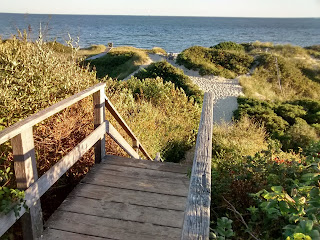I recently sold all of my marijuana stocks and put all of the proceeds into Turning Point Brands (TPB). Pot stocks fell 30% after Canadian legalization October 17th, and Turning Point Brands is down just 1% since October 17th.
I think there will be future opportunities in cannabis stocks when they will be much cheaper.
But right now I go with my instinct that there was a bubble. On Oct 17, I felt a similar uneasiness when Bitcoin was at $15,000 in December 2017, and I sold the Bitcoin at $10,000 per coin before the price fell all the way to $6,200. I suffered from Fear Of Losing All My Gains and sold while I still had a nice profit.
When there's over buying and over exuberance there is usually high prices. I saw this in the land market in the Midwest with farm land selling for up to $10,000 per acre in 2012. Land prices later softened due to poor commodity prices.
In the book "Extraordinary Popular Delusions and The Madness of Crowds," the author Charles MacKay talks about some disturbing Trends in the human psyche on a mass scale. His book looks at The South Seas Bubble, The Mississippi Scheme and The Tulip Bubble, the Crusades, Witch Hunts and Alchemy. Let me throw in the 2000 Tech Bubble Crash and the Mortgage Crisis of 2008 that led to a 50% drop in the stock market; the 2017 Bitcoin Run Up to $19,000 and the Pot Market High of 2018.
Crowd hype is cheer leading, it's performed every day in business, sports and politics. Congratulations to the Boston Red Sox for beating the Los Angeles Dodgers in the 2018 World Series, 4-1.
Hype ebbs and flows with the crowds. Traders that I talked to were expecting a pot stock sell off around October 17th the day recreational cannabis became legal in Canada.
I watched a sell-off occur on October 17th as Canopy Growth hit $59 a share and then quickly retreated and fell into the low 40s and before you know it in a couple of days it was headed even lower, into the 30s. There was panic in the market. On October 22nd, I sold Canopy at 43. I had watched Aurora Cannabis (ACB) climb over $10 per share, but was sliding. I sold Aurora Cannabis at $9.50 per share.
Canopy and Aurora both fell 30% after I sold them. The same day I sold I also bought shares of Turning Point brands at $42.40 per share, the stock recently traded at $41.63, down 1.8%.
Turning Point Brands sells products such a Zig-Zag papers that serve the Cannabis Market but does not sell cannabis. Turning Point Brands is a consumer non-cyclical, my favorite type of company, it sells products like Vapes that people want every day of the year.
A hot seller in the Cannabis Market is cigar wraps. Turning Point Brands Zig-Zag brand sells cigar wraps that are immensely popular among smoking connoisseurs.
Turning Point brands also sells chewing tobacco like Beech-Nut and Stoker's, and Red Cap pipe tobacco and Zig-Zag Cigarillos.
In the electronic vapor Market the company's Vapor Beast and Vaporshark products are sold widely.
Own the Steady-Eddy everyday seller, and you will make money. I've had good luck owning tobacco stocks in the past and this company Turning Point Brands has only an $805 million dollar market cap compared to the market caps of these cannabis stocks like Aurora Cannabis (ACB) at $6 billion.
I like the strategy of Turning Point Brands: "Our growth will be driven by focusing on nurturing and growing our key Brands and sales Platforms in the tobacco, vapor and non-tobacco space, improving the efficiency of our operations, and expanding our capabilities and product breadth through additional Acquisitions and innovation."
Lawrence S. Wexler is president and CEO of Turning Point Brands. He previously worked 21 years for Philip Morris. TPB is a Louisville, Ky., company that can capitalize on this pot Market by selling papers and wraps to smokers.
Aurora Cannabis and Canopy Growth should be around a long time. They are well capitalized and will be growing operations rapidly. I will wait six months to see how the Cannabis sector looks. In the meantime, I have to make capital work for me, and for this, I put the money into Turning Point Brands.
Disclosure: The author owns Turning Point Brands (TPB) and may buy more shares under $40 per share.
Disclosure: The author owns Turning Point Brands (TPB) and may buy more shares under $40 per share.








